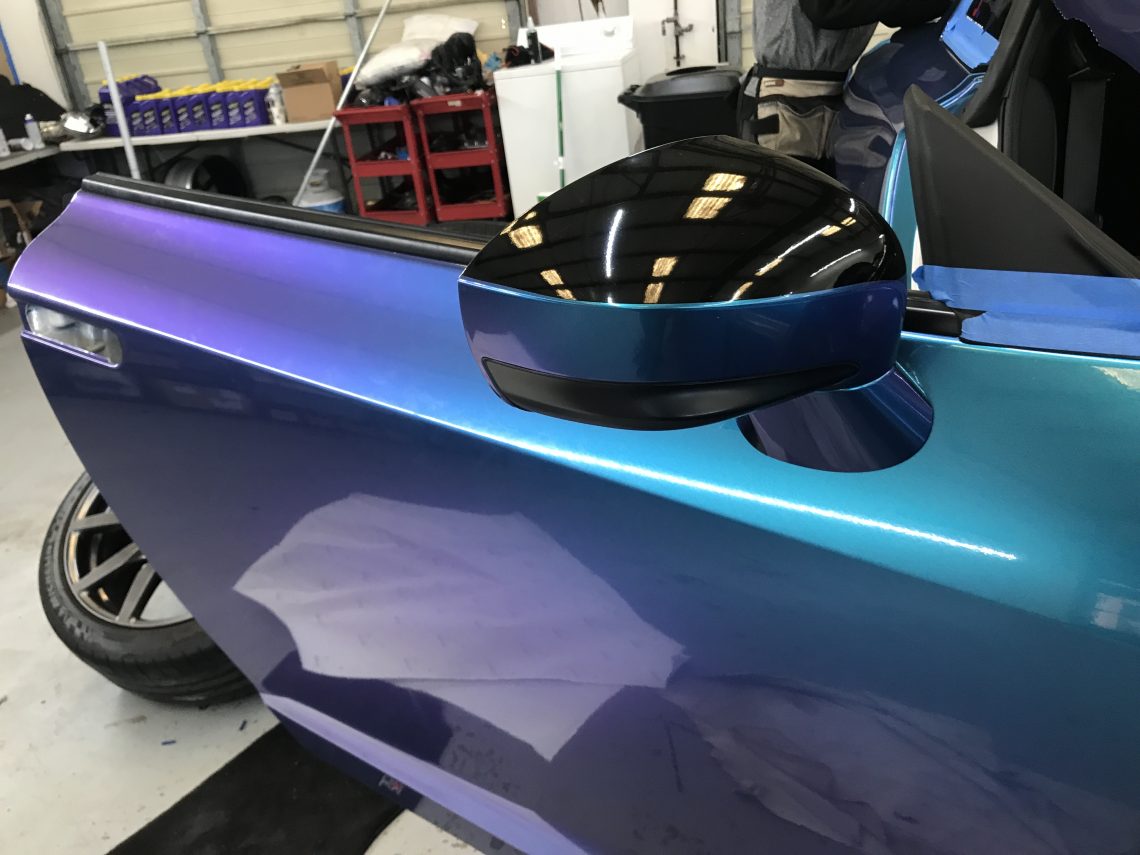The Central Processing Unit or CPU is the mind of the gadget but not essentially smart. It is a element that works as per the given directions referred to as the instruction set. The directions inform the processor to move knowledge between reminiscence and registers or carry out a selected calculation utilizing an execution unit. High-performance CPUs are possible with complex hardware at the expense of power. The approach to CPU design is a elementary difference between Intel and Arm. X86 targets peak performance while Arm processors purpose for higher vitality effectivity. Today, we've 64- bit architectures in use for PCs and smartphones. Phones made this transition in 2012 but didn't change the method in which units have been used. Intel coined the time period x86-64 for PCs utilizing 64-bit architecture but was as a substitute announced by AMD in 1999. The Thumb model supports a variable-length instruction set that provides both 32- and 16-bit directions for improved code density. Some older cores can even provide hardware execution of Java bytecodes; and newer ones have one instruction for JavaScript. Released in 2011, the Armv8-A architecture added help for a 64-bit tackle space and 64-bit arithmetic with its new 32-bit fixed-length instruction set. Arm Neoverse E1 being ready to execute two threads concurrently for improved aggregate throughput performance. Arm Cortex-A65AE for automotive applications can be a multithreaded processor, and has Dual Core Lock-Step for fault-tolerant designs . The Neoverse N1 is designed for "as few as 8 cores" or "designs that scale from 64 to 128 N1 cores within a single coherent system". Many of the variations between RISC-V, ARM, and x86 microprocessors are delicate and relate to how memory is addressed, branches are executed, exceptions are dealt with, and so on. ARM is Reduced Instruction Set Computing primarily based, while Intel is Complex Instruction Set Computing based. The Arm's CPU directions are reasonably atomic, having a close correlation between the number of micro-ops and directions.
However, CISC presents many instructions, and a lot of them supply a quantity of operations similar to math, data movement, and optimization. However, complex instruction leads to more power consumption however offers higher performance. Arm provides a clean 64-bit implementation somewhat than extending its 32- bit instruction set. For this, ARMv8 architecture makes use of two execution states, AArch64 and AArch32- one for operating 64-bit code and the opposite for 32-bit code. The ARM design lets the processor seamlessly swap from one mode to the other while executing normally. This signifies that the 64-bit instructions' decoder is a new design that continues to be backwardly suitable however doesn't want to take care of compatibility with the 32-bit period. Processors which have a RISC architecture sometimes require fewer transistors than these with a posh instruction set computing architecture , which improves cost, power consumption, and heat dissipation. These traits are desirable for mild, transportable, battery-powered devices, including smartphones, laptops and tablet computer systems, and different embedded techniques, but are also useful for servers and desktops to some extent. For supercomputers, which devour massive quantities of electrical energy, Arm can be a power-efficient solution. Fabless licensees, who wish to integrate an Arm core into their own chip design, are usually solely thinking about buying a ready-to-manufacture verified semiconductor mental property core. For these customers, Arm Holdings delivers a gate netlist description of the chosen Arm core, together with an abstracted simulation mannequin and take a look at packages to assist design integration and verification. More ambitious clients, together with built-in system producers and foundry operators, select to acquire the processor IP in synthesizable RTL form. With the synthesizable RTL, the shopper has the ability to perform architectural stage optimisations and extensions. This allows the designer to attain unique design targets not otherwise potential with an unmodified netlist (high clock speed, very low energy consumption, instruction set extensions, etc.). While Arm Holdings doesn't grant the licensee the right to resell the Arm architecture itself, licensees could freely promote manufactured product corresponding to chip gadgets, analysis boards and full systems.
Merchant foundries can be a special case; not only are they allowed to promote finished silicon containing Arm cores, they often hold the proper to re-manufacture Arm cores for other prospects. In ARM processors, because the instructions are easy, the circuitry requires fewer transistors, leading to smaller chips or more chip house, due to this. ARM processors integrate many peripherals, together with graphic processing units , allowing computers like the Raspberry Pi to have so few parts. Simple instructions mean extra instructions are required to do tasks. ARM processors make up for the increased execution with pipe-lining and sooner processors. Intel x68's instructions are extra centered on performing advanced duties with nice flexibility. ARM processors require the program to load variables into registers earlier than working. However, x68 can perform operations between registers, between a reminiscence location and a register, and even between reminiscence areas. Other joint operations are single instruction loops, reminiscence searches, barrel rolls, and rather more. Rather than prolong its 32-bit instruction set, Arm offers a clear 64-bit implementation. To accomplish this, the ARMv8 architecture makes use of two execution states, AArch32 and AArch64. As the names indicate, one is for running 32-bit code and one for 64-bit. The beauty of the ARM design is the processor can seamlessly swap from one mode to the other during its regular execution. This means that the decoder for the 64-bit directions is a new design that doesn't need to keep up compatibility with the 32-bit period, yet the processor as an entire stays backwardly compatible. However, Arm has indicated that future ARMv9 Cortex-A processors shall be 64-bit solely by 2023, chopping off support for old 32-bit functions and operating techniques on these next-gen CPUs. In truth, 2021's small Cortex-A510 and powerhouse Cortex-X2 CPUs are already 64-bit only. Applications that run in your cellphone aren't written in CPU instructions; that may be madness with today's massive cross-platform apps than run on a big selection of chips. Instead, apps written in numerous higher-level programming languages (like Java or C++) are compiled for particular instruction sets in order that they run accurately on Arm, x86, or other CPUs. These instructions are additional decoded into microcode ops inside the CPU, which requires silicon area and power. Keeping the instruction set easy is paramount if you want the bottom power CPU.
However, larger performance may be obtained from extra complicated hardware and directions that perform multiple operations at once, on the expense of energy. This is a fundamental distinction between Arm vs x86 and their historic approaches to CPU design. This perceived need for a new approach to CPU design came about as the bottlenecks limiting CPU performance modified. So-called CISC designs, including the original 8086, have been designed to deal with the high cost of memory by shifting complexity into hardware. They emphasized code density and some instructions carried out a number of operations in sequence on a variable. As a design philosophy, CISC tried to improve efficiency by minimizing the number of instructions a CPU had to execute so as to perform a given task. CISC instruction set architectures typically offered a variety of specialized instructions. TheAdvanced SIMDextension (akaNeonor "MPE" Media Processing Engine) is a combined 64- and 128-bit SIMD instruction set that provides standardized acceleration for media and sign processing functions. Neon is included in all Cortex-A8 devices, but is optionally available in Cortex-A9 devices. Neon can execute MP3 audio decoding on CPUs running at 10 MHz, and can run the GSM adaptive multi-rate speech codec at 13 MHz. It includes a comprehensive instruction set, separate register information, and unbiased execution hardware. Neon supports 8-, 16-, 32-, and 64-bit integer and single-precision (32-bit) floating-point information and SIMD operations for dealing with audio and video processing as nicely as graphics and gaming processing. The Neon hardware shares the identical floating-point registers as used in VFP. Devices such as the Arm Cortex-A8 and Cortex-A9 support 128-bit vectors, however will execute with sixty four bits at a time, whereas newer Cortex-A15 units can execute 128 bits at a time. The core difference between ARM and x86 chips is their instruction set. X86 chips are CISC, which stands for "complex instruction set computing." CISC chips try to represent a given task in the fewest traces of assembly as attainable, abstracting away basic features. These more complicated operations also need to run over the course of a number of clock cycles. ARM chips are RISC, which stands for "reduced instruction set computing." RISC chips include extremely rudimentary instruction sets, breaking each course of down into extremely small, easy steps.
Each of those smaller steps could be executed in a single clock cycle. Arm Limited offers designs for both 32-bit and 64-bit RISC multicore processors. The processors use a much simpler instruction set than their Intel counterparts, that are based on the advanced instruction set computing architecture. The two forms of processors additionally employ different methods to optimize performance and increase effectivity. For example, Intel takes a hardware strategy to maximizing efficiency, whereas Arm takes a software method. Instead, apps written in varied higher-level programming languages (like Java or C++) are complied for specific instruction sets so that they run appropriately on Arm or x86 CPUs. If you need the bottom power CPU, keeping the instruction set easy is paramount. However, greater performance can be obtained from extra complex hardware and instructions on the expense of power. This is a fundamental distinction between Arm's and Intel's approaches to CPU design. Many Samsung and Apple smartphones and tablets, and primarily all devices produced by Qualcomm, make the most of some Arm mental property. A new wave of servers produced with Arm-based systems-on-a-chip has already made headway in competing in opposition to x86, particularly with low-power or special-use fashions. Each gadget incorporating an Arm processor tends to be its own, distinctive system, just like the multi-part Qualcomm Snapdragon 845 cell processor depicted above. As the paradigm shifted and mainstream customers embraced smartphones and tablets, it rapidly turned apparent that x86 chips from Intel, AMD, and VIA, merely weren't as a lot as the duty. While x86 was probably the most prolific instruction set on the planet, it wasn't a good choice for mobile devices for a variety of causes. In reality, Intel's instruction set nonetheless isn't a popular selection for cellular processors, although this is beginning to change because of Intel's foundry tech lead.
In any case, in phrases of this market phase, x86 just isn't as environment friendly as different CPU architectures on the market, particularly processors based on ARM's 32-bit ARMv7 and 64-bit ARMv8 instruction sets. Arm, previouslyAdvanced RISC Machine, originallyAcorn RISC Machine, is a household of decreased instruction set computing architectures for pc processors, configured for various environments. It additionally designs cores that implement this instruction set and licenses these designs to a number of corporations that incorporate those core designs into their own merchandise. An x86-based PC or server is built to some frequent set of specifications for performance and compatibility. This keeps costs low for hardware vendors, however it additionally relegates most of the innovation and feature-level premiums to software, and perhaps a couple of nuances of implementation. The x86 device ecosystem is populated by interchangeable elements, no less than insofar as architecture is worried (granted, AMD and Intel processors have not been socket-compatible for fairly some time). The Arm ecosystem is populated by a few of the same elements, such as reminiscence, storage, and interfaces, however otherwise by full methods designed and optimized for the parts they make the most of. An Arm processor is certainly one of a family of central processing units based mostly on the decreased instruction set computer architecture for laptop processors. Arm Limited, the corporate behind the Arm processor, designs the core CPU elements and licenses the intellectual property to associate organizations, which then build Arm-based chips in accordance with their own requirements. The Central Processing Unit is the "brains" of your system, but it's not exactly smart.
A CPU solely works when given very particular directions — suitably referred to as the instruction set — which inform the processor to move data between registers and memory or to carry out a calculation using a particular execution unit . Desired directions can also inform hardware design, as we'll see in a second. The Central Processing Unit is the "brain" of your device, however it's not precisely sensible. A CPU only works when given very particular directions — suitably referred to as the instruction set — which tells the processor to maneuver data between registers and memory or to perform a calculation utilizing a selected execution unit . Unique CPU hardware blocks require completely different directions and these tend to scale up with more complicated and highly effective CPUs. The maker of an Intel- or AMD-based x86 laptop doesn't design nor does it own any portion of the mental property for the CPU. "Intel Inside" is a seal certifying a license for the gadget producer to construct a machine around Intel's processor. An Arm-based gadget may be designed to incorporate the processor, maybe even making diversifications to its architecture and performance. For that reason, rather than a "central processing unit" , an Arm processor is instead called a system-on-a-chip . Much of the performance of the gadget could also be fabricated onto the chip itself, cohabiting the die with Arm's exclusive cores, somewhat than constructed across the chip in separate processors, accelerators, or expansions. X86 is a family of complex instruction set laptop instruction set architectures initially developed by Intel based mostly on the Intel 8086 microprocessor and its 8088 variant. The 8086 was introduced in 1978 as a fully 16-bit extension of Intel's 8-bit 8080 microprocessor, with memory segmentation as a solution for addressing more reminiscence than could be lined by a plain 16-bit tackle. The term "x86" came into being as a result of the names of a number of successors to Intel's 8086 processor finish in "86", including the 80186, 80286, and processors. Ampere just lately unveiled the first 80-core Arm-based 64-bit server processor, which targets workloads similar to artificial intelligence, data analytics, hosting and cloud-native applications. Arm-based processors are also being used in a number of the world's quickest supercomputers and are gaining rising recognition consequently. In the meantime, Arm Limited continues with its personal efforts to march into the info middle. Its Neoverse chips, for example, promise the performance and power efficiency wanted to support cloud, edge and 5G workloads now and into the foreseeable future. They often had to be carried out throughout multiple chips, as a end result of the VLSI methods of the time period couldn't pack all the necessary elements right into a single package.
Implementing complicated instruction set architectures, with support for a large quantity of rarely used instructions, consumed die house and lowered maximum achievable clock speeds. Meanwhile, the price of reminiscence was steadily decreasing, making an emphasis on code measurement less important. ARM processors are generally found in units like mobiles phones whereas Intel processors are often utilized in larger devices like laptop computer or desktop computers. Because ARM is RISC based mostly, the architecture requires fewer transistors which helps to enhance value, energy consumption, and produces decrease heat. Additionally, in distinction to computer systems which often prioritize efficiency, smartphones tend to benefit from the longer battery life and lower heat dissipation ARM supplies. Also, ARM processors depend on software program for performance while Intel processors depend on hardware. Again, as ARM processors evolve, they're being expanded into more and more purposes, with computer systems being one. CPUs are basically the brains of an embedded system where it uses particular directions, or an instruction set, to maneuver knowledge between registers and reminiscence or to carry out sure calculations as required. These days, most computing gadgets are likely to have either a processor utilizing the x86 design, like Intel processors, or the ARM designused in Android/Apple smartphones or tablets. ARM CPUs are also being more and more carried out into laptop computer computer systems as they proceed to evolve. Central processing models, or CPUs, are used in the know-how we use daily, from smartphones, to laptop computer computers, to wearables. These processors enable these units to carry out directions and duties in order for it to perform its designated operate. While there are several types of processors used within the gadgets used today, ARM processors have quickly turn into a few of the most generally used, with as a lot as billions of ARM-based devices produced each year. So, what exactly is an ARM processor and how does it differ from different processors used in embedded systems? In this text, we'll present background on the ARM processor, its comparison to different processor varieties, and a few of its benefits and downsides. In 2005, about 98% of all cellphones sold used no less than one Arm processor.
In 2010, producers of chips primarily based on Arm architectures reported shipments of 6.1 billion Arm-based processors, representing 95% of smartphones, 35% of digital televisions and set-top boxes and 10% of cellular computer systems. In 2011, the 32-bit Arm architecture was probably the most widely used architecture in mobile devices and the preferred 32-bit one in embedded methods. In 2013, 10 billion had been produced and "Arm-based chips are present in almost 60 p.c of the world's cell gadgets". A RISC processor focuses on using a couple of directions and rather equips more compartmentalized instruction sets. Meaning, in one clock cycle one instruction will carry out a selected operation. ARM synthesizes 32-bit and 64-bit RISC multi-core processors which makes it operate at a higher pace and perform millions of directions per second. RISC processors are meant to provide excellent performance at a fraction of the power demand of complicated instruction set computing vices. In the mid 1990s, it was obvious that the 32-bit tackle house of the x86 architecture was limiting its performance in applications requiring giant data units. A 32-bit address area would allow the processor to instantly tackle only four GB of knowledge, a dimension surpassed by functions such as video processing and database engines. During execution, present x86 processors employ a couple of further decoding steps to separate most directions into smaller pieces called micro-operations. These are then handed to a control unit that buffers and schedules them in compliance with x86-semantics in order that they are often executed, partly in parallel, by considered one of a number of execution models. The major difference between Arm and x86 processors is the method in which that they execute their directions. X86 techniques are based mostly on advanced instruction set pc designs, whereas Arm is based on RISC designs. In brief, x86 processors can execute multi-step operations on each instruction, whereas Arm processors use a restricted, but extremely optimized, set of directions. Both x86 and ARM are much used to match software program availability and toolchains. The benefit of ARM-based designs is that running operating systems are designed for mobiles such as Android. Intel-based devices' advantage is that any operating system can run on a regular desktop PC, together with Linux and Windows. Both devices can run the same applications as the appliance compiled in virtual machines counting on language like Java.
ARM-based methods are restricted in phrases of the working system as most operating techniques are written for x86-based computers. Because of its increasing recognition, Microsoft launched a slimmed-down version of Windows 10 often recognized as Windows 10 IoT Core, which can run on ARM processors. Arm's CPU directions are fairly atomic, with a very shut correlation between the number of instructions and micro-ops. CISC, by comparability, offers many extra directions, a lot of which execute a number of operations . This results in higher efficiency however extra energy consumption decoding these complicated instructions. However, the strains between RISC and CISC are slightly blurrier today, with every borrowing ideas from one another and a variety of CPU cores built on architecture variations. Furthermore, the choice to customise Arm's architecture means that partners, similar to Apple, can add their own more complex instructions. A RISC processor concentrates on keeping the variety of instructions to a minimal, whereas additionally keeping those directions so simple as possible. One instruction is executed per clock cycle, which ensures predictable processing and eases acceleration strategies corresponding to pipelining. The simple directions require relatively few transistors in silicon, giving chip designers freedom to optimise parameters corresponding to cost and energy consumption. On the other hand, with fewer instructions to select from, and one instruction per clock cycle, a lot of directions could be wanted to complete a given task. This can lead to heavy dependence on RAM and slow execution times for complex workloads that CISC processors can deal with more easily and quickly. The different core distinction between the architectures is energy utilization. Thanks to their lowered instruction sets, RISC chips require much less transistors to function.





















































